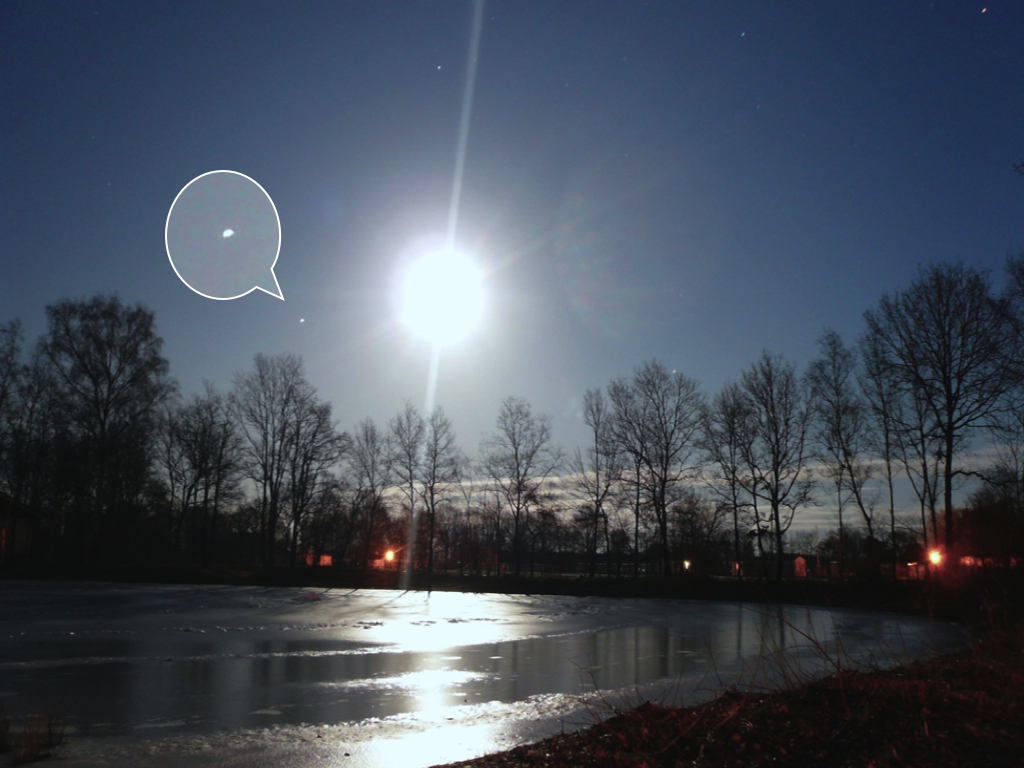Daily Image
24-02-2010Heavenly bodies
| Submitter: | Michael Garrett |
| Description: | At the end of last month, the Moon and Mars teamed up to provide a heavenly spectacle. Early in the evening the sky around Drenthe cleared, and armed with a simple digital camera on a long exposure setting and propped up against a steady fence, fortified against the cold, it was possible to capture the scene shown above. Actually, Mars was much easier to see with the naked eye than it was with the camera - the CCD in a digital camera is a linear device while the eye's response is closer to logarithmic (hence the optical magnitude system). Since the moon is about 30000 times brighter than Mars, this image has a dynamic range of about 45db, though admittedly it does suffer from a few artifacts on source. The elongated shape of Mars is not an atmospheric effect, but due to its movement across the sky during the exposure (about 30 seconds), via the rotation of the Earth. With Mars at "opposition" (the point at which Mars is directly opposite the Sun as seen from Earth), it also makes its closest approach to the Earth in its current orbital cycle. However, at a distance of 100 million kilometres (by comparison the moon is only 380000 km away) it still takes the radio transmissions from NASA's Mars Rovers "Spirit" and "Opportunity" about 6 minutes to reach the Earth. Both of these rovers are preparing for a long winter in the southern hemisphere. Unfortunately, attempts to free Spirit from a sand trap have now been abandoned. During the upcoming winter, the temperature is expected to reach about -50C - so we should not complain! Of course, Spirit and Opportunity are not alone on Mars - flying high above them, ESA's Mars Express continues to take spectacular images of the Martian landscape below. Meanwhile, summer (or at least spring) is arriving in the northern hemisphere where the Pheonix lander is located, but at fairly high latitudes, close to the polar region. During last year's winter, temperatures there probably reached -110C, well beyond the design spec of Pheonix's sensitive electronics. So far the Mars Reconnaissance Orbiter has not received any radio signals from Pheonix, and the chances of the lander rising from the ashes are not considered high. With all these radio signals flying here there and everywhere, it reminds me that when Mars was in opposition in 1924, and only 90 million km from the Earth, the US Navy made a search for radio signals from the Red Planet in an attempt to confirm the existence of Martians - a concept that was pretty popular at that time. They did not detect anything, but it's an interesting story - if you want to know more see http://bit.ly/4jBmd7 |
| Copyright: | ASTRON |
| Tweet |  |
